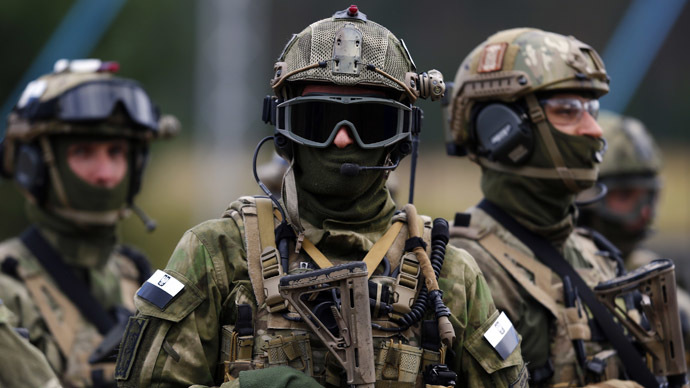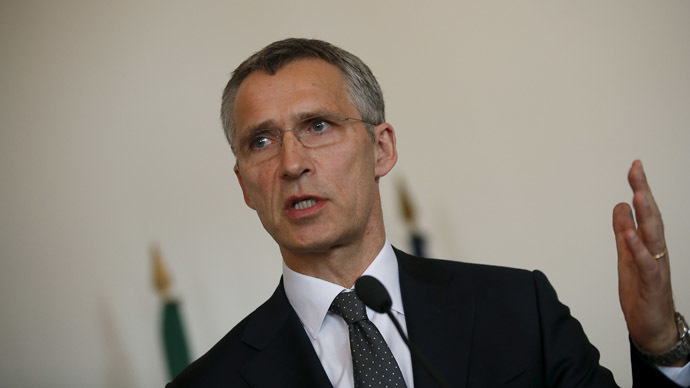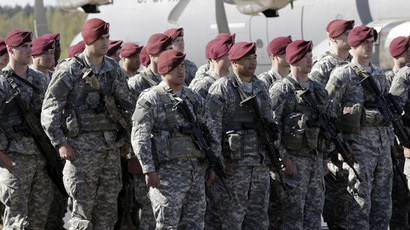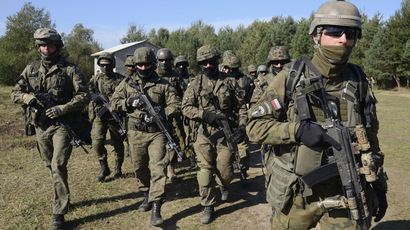NATO plans 40,000-strong rapid response force in E. Europe

NATO’s rapid response Spearhead Force in Europe might reach 40,000 troops, a tenfold growth from the initial 4,000-strong force deployed last year, the military alliance’s chief said. Most of these troops will be stationed near Russian borders.
“NATO defense ministers ... [will] make a decision to further increase the strength and capacity of the 13,000-strong NATO Response Force (NRF) to 30,000 or 40,000 troops,” Secretary-General Jens Stoltenberg said Monday.
The decision is to be officially announced during NATO’s defense ministers meeting on June 24-25 in Brussels.
The troops will be under the command of 6 HQs to be stationed in Bulgaria, Estonia, Latvia, Lithuania, Poland and Romania. The Spearhead Force will include Special Forces and rapid response teams, enforced with marine and air components.
A new rapid reaction force ready to be deployed within 48 hours was initially intended to consist of 4,000 troops.
READ MORE: At least 4,000 troops: NATO approves new E. Europe-based spearhead force
The Spearhead Force has already held its first military drills codenamed Noble Jump in Poland. The war games became “the biggest reinforcement” of defense since Cold War times, said Stoltenberg, adding that the alliance is facing challenges from “the behavior of a more assertive” Russia.

Last week, Stoltenberg criticized Russia for announced plans to add to its nuclear arsenal 40 newly made intercontinental ballistic missiles in 2015.
READ MORE: NATO conducting biggest beef up of defenses since Cold War – alliance chief
“This nuclear saber-rattling of Russia is unjustified. It's destabilizing and it's dangerous. This is something which we are addressing, and it's also one of the reasons we are now increasing the readiness and preparedness of our forces,” Stoltenberg said during a news briefing in Brussels last Tuesday.
Russian President Vladimir Putin made the announcement about further development of the strategic nuclear armed forces in response to a report that the US is seriously considering deployment of heavy weapons to new NATO member states on permanent basis.
READ MORE: Moscow will respond to NATO approaching Russian borders ‘accordingly’ – Putin
The chill in Russia-US relations already resemble the worst years of the Cold War, yet experts warn that further escalation of the Ukrainian crisis could lead to an open standoff between Moscow and Washington.
If Washington opts to send armaments to Kiev authorities, as some Republicans congressmen want, Moscow would react immediately, experts quoted in US media believe.
Washington should pursue a diplomatic solution for its conflict with Russia, former US Ambassador to Russia Michael McFaul told The New York Times.
“The US-Russia conflict is not going to be resolved in weeks or months,” McFaul said. “This challenge will take years, even decades.”














